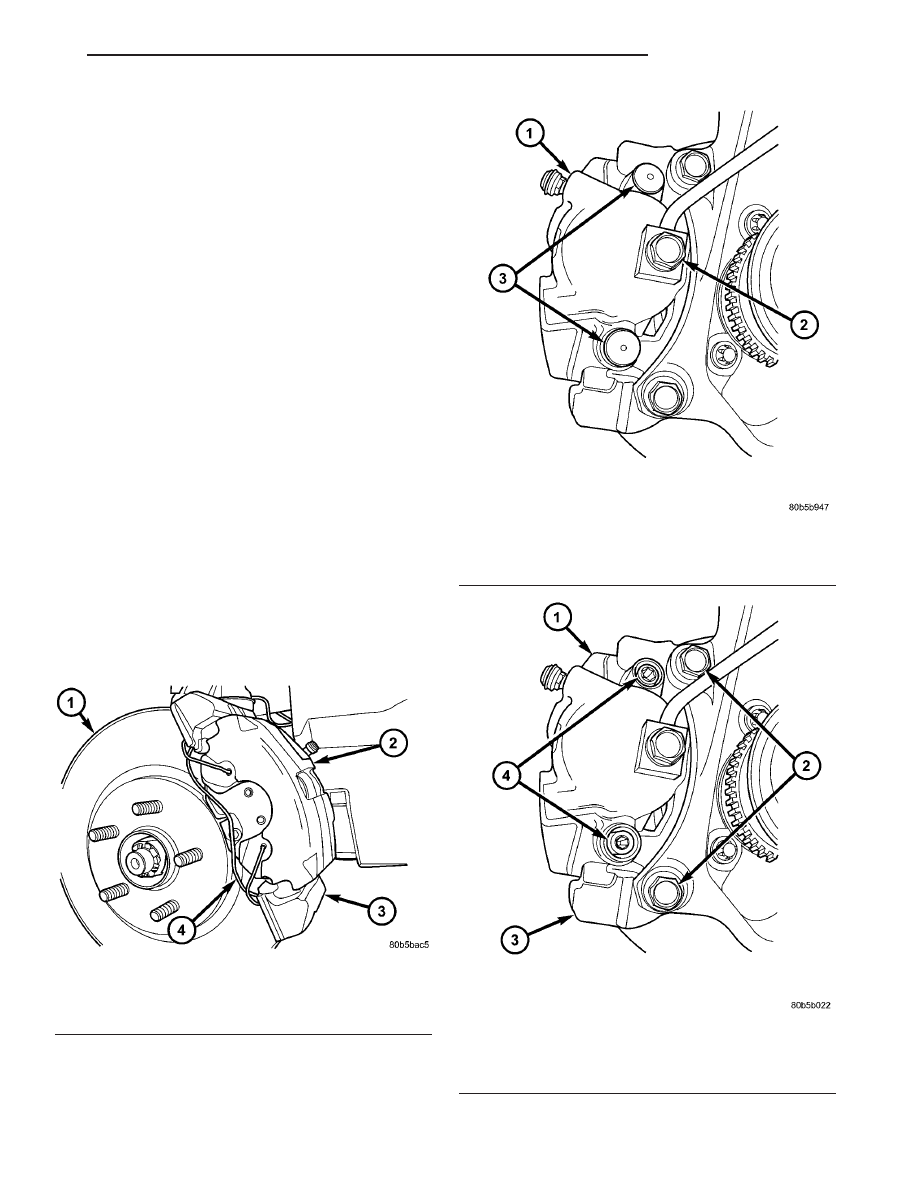Chrysler Sebring, Stratus sedan, Sebring Convertible. Manual - part 283

hydraulic brake hoses for surface cracking, scuffing,
or worn spots. If the fabric casing of the rubber hose
becomes exposed due to cracks or abrasions in the
rubber hose cover, the hose should be replaced imme-
diately. Eventual deterioration of the hose can take
place with possible burst failure. Faulty installation
can cause twisting, resulting in wheel, tire, or chassis
interference.
The brake tubing should be inspected periodically
for evidence of physical damage or contact with mov-
ing or hot components.
The flexible brake tube sections used on this vehicle
in the primary and secondary tubes from the master
cylinder to the ABS hydraulic control unit connections
must also be inspected. This flexible tubing must be
inspected for kinks, fraying and contact with other com-
ponents or with the body of the vehicle.
BRAKE PADS/SHOES - FRONT
REMOVAL - FRONT DISC BRAKE SHOES
(1) Raise the vehicle. (Refer to LUBRICATION &
MAINTENANCE/HOISTING - STANDARD PROCE-
DURE).
(2) Remove both front wheel and tire assemblies.
NOTE: Using this procedure, begin on one side of
the vehicle.
(3) Remove the anti-rattle spring from the out-
board side of the caliper and adapter (Fig. 4).
(4) Remove the two caps in place over the caliper
guide pin bolts (Fig. 5).
(5) Remove the two caliper guide pin bolts (Fig. 6).
Fig. 4 FRONT DISC BRAKES
1 - BRAKE ROTOR
2 - BRAKE CALIPER
3 - BRAKE CALIPER ADAPTER
4 - ANTI-RATTLE SPRING
Fig. 5 CALIPER GUIDE PIN BOLT CAPS
1 - FRONT BRAKE CALIPER
2 - BRAKE HOSE BANJO BOLT
3 - CAPS
Fig. 6 CALIPER MOUNTING
1 - FRONT BRAKE CALIPER
2 - CALIPER ADAPTER MOUNTING BOLTS
3 - CALIPER ADAPTER
4 - CALIPER GUIDE PIN BOLTS
JR
BRAKES - BASE
5 - 7
BRAKE LINES (Continued)